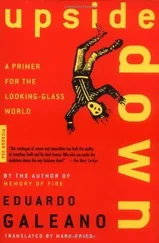“Powerful explosives have enabled man to do wonderful work. But they are also a terrible means of destruction in the hands of the great criminals who lead people to war.”
Very shortly thereafter, Pierre was killed, run over by a horse-drawn cart carrying four tons of military materiel.
Marie survived him, and lived to see her body pay the price of her success. Radiation gave her burns, open sores, and horrible pain until she finally died of pernicious anemia.
Her daughter Irene, who also won the Nobel Prize for her achievements in the new realm of radioactivity, died of leukemia.

He sold newspapers on trains. At the age of eight he started school, but he lasted only three months. The teacher sent him home, explaining, “This child is too dumb.”
When Thomas Alva Edison grew up, he patented eleven hundred inventions: the incandescent lightbulb, the electric locomotive, the phonograph, the movie projector. .
In 1878, he founded what would later become the General Electric Company and set up the first electric power plant.
Thirty-two years later, this illuminator of modern life sat down with journalist Elbert Hubbard.
He said:
“Some day some fellow will invent a way of concentrating and storing up sunshine, instead of this old, absurd Prometheus scheme of fire.”
And he also said:
“Sunshine is a form of energy, and the winds and the tides are manifestations of energy. Do we use them? Oh, no! We burn up wood and coal, as renters burn up the front fence for fuel.”

Nikola Tesla always claimed to have invented the radio, but Guglielmo Marconi got the Nobel for it. In 1943, after years of litigation, the U.S. Supreme Court acknowledged that Tesla’s patent was first. He never heard the news. He had been in his grave for five months.
Tesla always claimed to have invented the alternating current generator, which today lights up the cities of the world, but the invention got a bad reputation because it was first tried out frying condemned men in the electric chair.
Tesla always claimed he could light a lamp from twenty-five miles away without any wires, but when he actually did so he blew up the power station in Colorado Springs and got run out of town.
Tesla always claimed he had invented little steel men guided by remote control, and rays that could photograph the inside of the body, but few took seriously this circus magician who spoke regularly with his deceased friend Mark Twain and received messages from Mars.
Tesla died in a hotel in New York with his pockets as empty as they had been sixty years before when he got off the boat from Croatia. To honor his memory, the unit of measure for magnetic flows is now called the Tesla, as is the coil that produces over a million volts of electricity.
ORIGIN OF AERIAL BOMBARDMENTS

In 1911, Italian airplanes dropped grenades on several settlements in the Libyan desert.
The test proved that attacking from the air was quicker, cheaper, and more devastating than land offensives. The commander of the air force reported:
“The bombardment has been marvelously effective at demoralizing the enemy.”
The experiments that followed also featured European massacres of Arab civilians. In 1912, French airplanes attacked Morocco, selecting densely populated targets so they would not miss. And the following year, the Spanish air force tested, also on Morocco, a novelty from Germany: fragmentation bombs that sprayed deadly shards of steel in all directions.
Then. .
THE AGES OF SANTOS DUMONT

At the age of thirty-two, Brazilian argonaut Alberto Santos Dumont, inexplicably alive after multiple flying disasters, receives the title of chevalier of France’s Legion of Honor. The press declares him the most elegant man in Paris.
At thirty-three, he is the father of the modern airplane. He invents a motorized bird that takes off without a catapult and climbs to an altitude of six meters. When he lands, he declares:
“I have the utmost confidence in the future of the airplane.”
At forty-nine, shortly after the First World War, he warns the League of Nations:
“The feats of flying machines allow us to foresee with horror the great destructive power they could have, sowing death not only among combatants but also, lamentably, among people who are defenseless.”
At fifty-three:
“I don’t see why dropping explosives from airplanes could not be outlawed, when dropping poison into the water system is.”
At fifty-nine, he wonders:
“Why did I invent this thing? Instead of spreading love it has become a cursed weapon of war.”
And he hangs himself. Since he is so tiny, practically weightless, practically heightless, his necktie does the trick.
PHOTOGRAPH: A FACE IN THE CROWD

Munich, Odeonplatz, August 1914.
The imperial flag waves overhead. Under its shelter, a multitude exults in the ecstasy of being German.
Germany has declared war. “War! War!” shout the people, crazed with joy, eager to march straight into battle.
In the photograph’s lower corner, lost in the crowd, is the face of a man in a state of bliss, eyes raised toward heaven, mouth agape. Those who know him could tell us his name is Adolf, he is Austrian and rather ugly, his voice is screechy, and he is always on the verge of a nervous breakdown. He sleeps in an attic room and ekes out a living in bars, going table to table, selling his watercolors of pastoral scenes copied from calendars.
The photographer, Heinrich Hoffmann, does not know him. He has no idea that in that sea of heads his camera has recorded the presence of the Messiah, the redeemer of the race of the Nibelungs and the Valkyries, the Siegfried who will avenge the defeat and humiliation of this great Germany that will march singing from the nuthouse to the slaughterhouse.

As the drums of the first world butchery drew near, Franz Kafka wrote Metamorphosis. And not long after, the war under way, he wrote The Trial.
They are two collective nightmares:
a man awakens as an enormous cockroach and cannot fathom why, and in the end he is swept away by a broom;
another man is arrested, charged, judged, and found guilty, and cannot fathom why, and in the end he is knifed by the executioner.
In a certain way those stories, those books, continued in the pages of the newspapers, which day after day told of the progress of the war machine.
The author, ghost with feverish eyes, shadow without a body, wrote from the ultimate depths of anguish.
He published little, practically no one read him.
He departed in silence, as he had lived. On his deathbed, bed of pain, he only spoke to ask the doctor:
“Kill me, or else you are a murderer.”

In Switzerland in 1919, in a ballroom at the Hotel Suvretta in Saint Moritz, Vaslav Nijinsky danced for the last time.
Before an audience of millionaires, the most famous dancer in the world announced that he would dance the war. And by the light of candelabras, he danced it.
Читать дальше



















